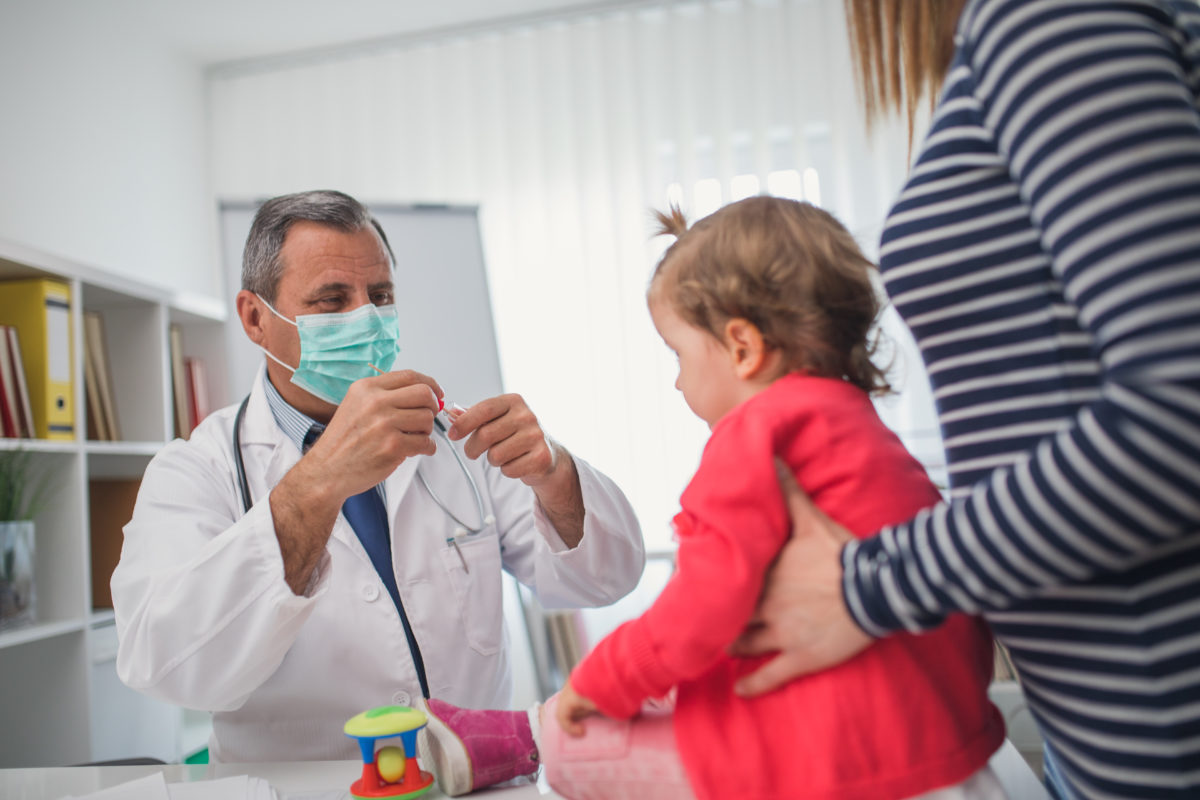Last Updated on November 24, 2025 by

Being ready for childhood medical crises can save lives. As caregivers, knowing the signs of three pediatric emergencies is key. It helps us give the right care quickly.
Respiratory distress in kids and seizures in children are very scary. These are among the top pediatric emergencies that need fast action. They include breathing problems, injuries, and brain crises.
Knowing how to react to these situations can make a big difference. Emergency rooms are key in giving the care needed during these times.

The state of pediatric emergency care is alarming. There are big gaps in readiness and preparedness. 83% of emergency departments are not fully equipped to handle pediatric emergencies. This puts thousands of children’s lives at risk every year.
Pediatric emergency department visits are a big concern. Millions of children seek emergency care every year. The data shows we need better readiness and preparedness in emergency departments.
“Investing in pediatric readiness could prevent over 2,100 child deaths each year in the U.S.,” says a report. This highlights the urgent need for better pediatric emergency care.
Emergency departments are not ready to handle pediatric cases. Many lack the right equipment, training, and protocols for children in emergencies.
We must recognize that childhood medical crises need special approaches. The lack of preparedness can have serious consequences.
Proper pediatric emergency preparedness can save lives. It reduces the severity of injuries and illnesses. By investing in pediatric emergency care, we can improve care quality and recovery chances for children.
Enhanced preparedness means having the right equipment, trained staff, and protocols. These are key for effective pediatric emergency care.
“The importance of pediatric emergency preparedness cannot be overstated. It is a critical component of providing high-quality care to children in emergency situations.”

Pediatric emergencies need quick and special care to avoid lasting harm. Kids face many serious conditions that need fast and right medical help.
The three main pediatric emergencies are respiratory issues, trauma, and neurological crises. Respiratory problems are a big reason kids go to the emergency room, making up to 42% of visits. Trauma, from accidents or harm, is another big worry.
Neurological crises, like seizures, are also urgent and need quick help. These issues are hard because kids are different from adults in many ways.
Children are not just small adults; they need special emergency care. Their bodies are different, so they need care that fits their needs. For example, kids’ airways are smaller and their metabolism is faster, affecting how they react to medicine.
It’s key to have special care for kids in emergencies. Doctors need to know how to help kids based on their age, size, and development.
Knowing when to get medical help fast is important for parents and caregivers. Look for signs like fast breathing, wheezing, or trouble breathing. Also, seek help for severe injuries, like head trauma or a lot of bleeding.
For neurological crises, like long seizures or ones with fever or confusion, get help right away. Knowing these signs and acting fast can really help kids in emergencies.
By understanding pediatric emergencies and the need for special care, we can better help kids in these critical times. This can lead to better outcomes for them.
Respiratory distress is a big deal in kids and needs quick help. It’s a top worry in kids’ health, causing serious problems that need fast action.
Asthma and bronchiolitis are big reasons kids go to the emergency room. Asthma makes airways swell and get tight, causing big trouble if not treated right. Bronchiolitis is a viral infection that hits young kids hard, leading to serious sickness.
Pneumonia and croup also add to the problem of kids’ breathing issues. Spotting these early is key to good care and avoiding worse problems.
Knowing the signs of trouble breathing is vital for quick help. Look out for fast breathing, wheezing, coughing, and signs like blue skin or acting very sleepy. Parents and caregivers need to watch for these to get help fast.
Spotting trouble early can really help kids. Knowing the signs helps doctors start the right treatment, which can make things better.
First steps in treating breathing problems include checking how bad it is and giving support. This might mean giving oxygen, medicine for asthma, and making sure they drink water. Good communication between doctors and families is key to making sure kids get the right care.
In short, breathing emergencies are a big deal for kids and need fast action. Knowing the common problems, spotting trouble signs, and starting the right treatment can help kids get better.
Trauma-related injuries have a big impact on kids, with over 43 million injury visits each year in the U.S. Trauma-related injuries are a big cause of sickness and death in children. They need quick and good care.
Pediatric trauma includes many injuries, from small to very serious. The most common are falls, motor vehicle accidents, and sports-related injuries. Knowing about these injuries helps us prevent and treat them better.
Falls are the top cause of non-fatal injuries in kids. Motor vehicle crashes are a big cause of death. Other big causes are pedestrian and bicycle accidents. This shows we need to make safety measures better.
Checking injured kids requires a careful and detailed method. Doctors use tools and methods to see how bad the injuries are. They first check the child’s airway, breathing, and circulation (ABCs). Then, they do a more detailed check.
The first steps in treating a pediatric trauma patient are very important. Prompt and proper care can greatly help. Important first steps include making sure the airway is clear, stopping bleeding, and stabilizing broken bones or spinal injuries.
Stopping pediatric trauma is just as important as treating it. Good prevention can lower injury rates and severity. Important steps include using safety gear like car seats and helmets, putting up fall prevention measures in homes and public places, and teaching safety education to kids, parents, and caregivers.
By knowing the causes and effects of pediatric trauma and using good prevention and treatment, we can help kids more. This can lessen the impact of trauma-related injuries.
When children have neurological crises like seizures, quick action is key. Caregivers and doctors must act fast to avoid lasting harm. These emergencies are tough because they happen suddenly and need careful handling.
Seizures are a big reason for emergency calls, often in schools. They happen when the brain’s electrical activity goes wrong. Seizures can range from mild staring spells to full-body convulsions.
Key factors to understand about pediatric seizures include:
Other emergencies include severe headaches, sudden weakness, and changes in mental state. These signs can point to serious problems like meningitis, stroke, or brain injury.
Spotting these signs early is vital for quick help. For example, a child with a bad headache, fever, stiff neck, or vomiting needs to see a doctor right away.
First, make sure the child is safe and check their ABCs. For seizures, gently hold their head and turn them to prevent choking. Also, keep track of how long the seizure lasts.
After the crisis, a long-term plan is made based on the cause. This might include medicine, physical therapy, or other treatments. Each plan is made just for the child.
Good long-term care helps the child now and prevents future problems. It aims to improve their life and stop future crises.
It’s very important to know how to handle pediatric emergencies. We talked about three big ones: breathing problems, changes in consciousness, and seizures. These need quick medical help, and hospitals are key in saving kids’ lives.
When kids have serious breathing or brain issues, they need special care. Knowing the signs and how to act can really help. Quick and right care can change a child’s life for the better.
Hospitals must be ready for kids in emergencies, and parents should know when to rush to the hospital. Research shows that quick action can greatly help kids in danger. For more tips, check out the National Institutes of Health on effective emergency care strategies.
The main pediatric emergencies are respiratory issues, injuries from trauma, and neurological problems like seizures. These can be very serious and need quick action.
Look for signs like fast breathing, wheezing, grunting, or pulling in the chest. If your child shows these signs, get medical help right away.
Kids can get hurt from falls, car accidents, or abuse. Knowing about these and how to handle them is key to better care.
Stay calm and keep the child safe. Turn them on their side and loosen tight clothes. Don’t hold them down or put things in their mouth. After it stops, get medical help to figure out why it happened.
Good care means spotting problems fast, using special methods, and having the right tools. Knowing the signs and when to act is also important.
Make sure the area is safe, use protective gear, and watch kids closely. These steps can help avoid many injuries.
Check if they have bad signs like vomiting, dizziness, or not waking up. If worried, get them to a doctor fast. Head injuries are serious and need quick checking.
Many emergency rooms try to help kids, but they’re not always ready. Make sure the one you go to can handle children’s needs.
Subscribe to our e-newsletter to stay informed about the latest innovations in the world of health and exclusive offers!